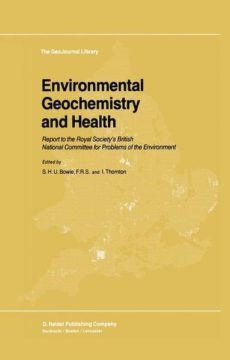One of the main outcomes of the eleven meetings of the Working Party was the recognition of the importance of interdisciplinary studies linking regional geochemistry with plant, animal and human health. The effects of major element deficiencies or excesses on plant health are well known; this is not the case for trace elements. In fact, rapid and reliable analytical methods for determining trace element abundances have only recently become available, and it is to be expected that important new information on trace element levels will be forthcoming. This, however, is only part of the problem because other factors such as element speciation, uptake and transmission may be more significant than total concentration. The pathways of elements from crops to animals are relatively well defined, but the aetiology of diseases attributable to elemental inadequacies or excesses is generally quite complex. Nevertheless, there is good evidence for diseases in livestock in the British Isles induced by deficiencies of Cu, Se and Co and Mo excess. On a world scale there is also convincing data on the effect of Na, P and I deficiencies and F excess on animal health. What is generally lacking, however, is adequate interaction between geochemists and biochemists, veterinary scientists and other concerned with animal health. Interpretation of geochemical data is complex as are connections between elemental abundances and the health of animals.
- Veröffentlicht am Donnerstag 28. Februar 1985 von Springer Netherland
- ISBN: 9789027718792
- 140 Seiten
- Genre: Gesellschaft, Natur, Sachbücher, Technik
